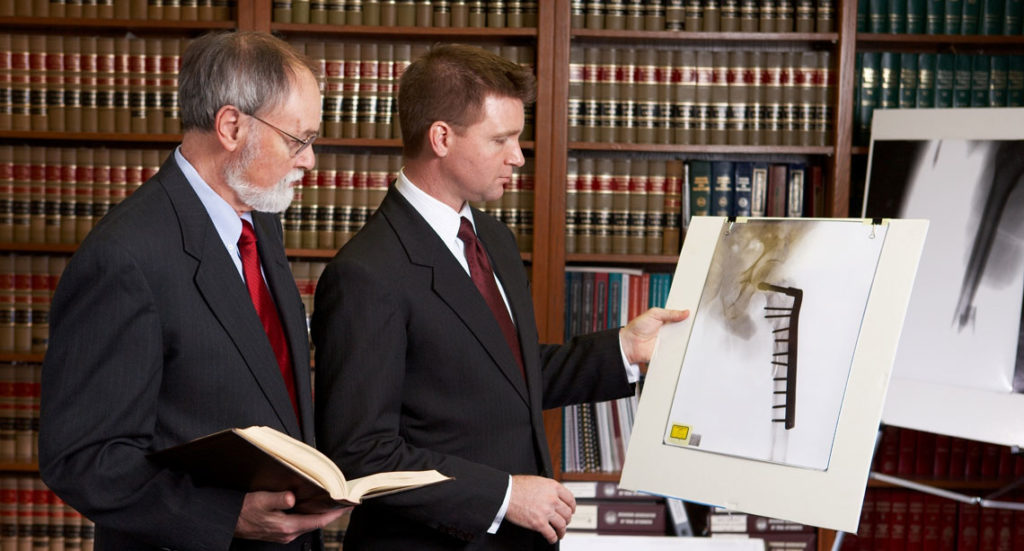Burn Injuries – More Common than you think
The American Burn Association reports that injuries due to burns receive medical treatment more than 486,000 times per year in the United States. The National Hospital Ambulatory Medical Care survey indicates this number is actually much higher.
Thirty thousand (30,000) victims per year need treatment at hospital burn centers. Forty thousand (40,000) people a year require hospitalization. Every year, nearly 3,275 people die because of the fire and smoke inhalation burn. Though burns are one of the most serious types of injuries, the survival rate is quite high at 96.8%.
Burn Injuries by Demographics
Approximately 68% of burn injuries are men with 32% females rounding out the total. Sixty percent (60%) of burn victims are Caucasian and twenty percent (20%) of the burn injuries are to African Americans. Hispanics receive 14% of burn injuries with 7% rounding out the total.
What are the causes of burn injuries?
Hospital admissions are the best way to estimate the causes of burn injuries. They are as follows:
- 43% from fires
- 34% scalding liquid
- 9% contact with hot objects
- 4% electrical fires
- 3% chemical burns
- 7% other burns
Where do burns typically occur?
ABA National Burn Repository has done an estimate on the places where burns most likely occur. They are as follows:
- 73% at home
- 8% at work
- 5% on the road
- 5% during sporting activities
- 9% other places
What is a “burn” injury?
We think of many causes when we utilize the phrase “burn.” It is, in essence, a sensation associated with our skin. The technical definition of a “burn” is severe skin damage such that the affected skin cells actually die. Our skin is the body’s largest organ and its death is felt by many, if not all, of the other organs. Most nerves are within the skin; therefore its perceived importance is high.
What are the types of burns?
The medical establishment has broken the categories of burns to three (3) levels; 1st, 2nd, and 3rd degree. This distinction is based upon how severe the damage is to the skin with the most minor damage being 1st degree, and the highest at 3rd degree. The definition is explained as follows:
- 1st degree burn = red non-blistering skin
- 2nd degree burn = blistering skin with thickening of the skin in addition to a red color
- 3rd degree burn = widespread thickening of the skin with the red being replaced with a white leathery look
- 4th degree burn = 3rd degree burns that extend into the tendons and bones of the body


What are the typical treatment of the burn degrees?
The American Medical Association and National Burn Association recommend certain treatments for the various burn degrees. They are as follows:
1st degree burns – Medical treatment should be sought if the area affects greater than a three (3) inch area or if the face or major joint is burnt. Major joints are as follows:
- Knee
- Ankle
- Foot
- Spine
- Shoulder
- Elbow
- Forearm
Treatment is recommended as follows:
- Soak the wound in cold water for greater than five minutes
- Take over the counter acetaminophen (Tylenol) or Ibuprofen for symptomatic relief of the pain
- Apply an anesthetic such as Lidocaine, Aloe Vera Gel, or creams to the skin and reduce the pain
- Apply and antibiotic ointment and loose gauge to protect the affected area from infection
What not to do with 1st degree burns.
Do not use ice on 1st degree burns. Ice can further damage the skin. Do not apply cotton balls to any burn because the small cotton fibers adhere to the injury like tape and increase the risk of bacterial infection. Do not apply butter or eggs to a 1st degree burn as there is no evidence these are effective.
2nd degree burn treatment – 2nd degree burns extend beyond the epidermis (the top layer of the skin) into the deeper skin tissue causing it to blister. A weeping burn is a 2nd degree burn. Most 2nd degree burns heal within three weeks without scarring. It is common to have a more permanent pigment change in the skin. Treatment generally includes the following:
- Run the skin under cold water for at least 15 minutes
- Take Tylenol (acetaminophen) or Ibuprofen to treat the pain symptoms
- Apply an antibiotic cream and loose gauge over the blisters to reduce the risk of bacterial infection
- Go to the hospital or seek other medical treatment if a 2nd degree burn affects your face, hands, buttocks, groin, or feet.
3rd degree burn treatment – Ironically, 3rd degree burns, while more serious, are less painful. This is because the burn is so extensive that is has killed the nerve cells, causing you to feel less sensation. Look for the following characteristics of a 3rd degree burn:
- Blisters that do not weep
- A dark brown color to the skin
- A leathery texture to the skin with thickening
- Charred skin
- Waxy or white color to the burned area
DO NOT attempt to treat 3rd degree or 4th degree burns. Rather, call 911 immediately and raise the injury above your heart. DO NOT get undressed as removal of clothing can remove burned tissue and increase the risk of a bacterial infection.
What complications do burn victims face?
A 3rd degree burn or other large area can cause hypothermia and hypovolemia. With the death of skin, its insulating properties are reduced, which can result in hypothermia – heat to leave one’s body at an accelerated rate.
Hypovolemia is commonly known as an injury from low blood amount. A third risk is tetanus from a bacterial infection caused by the loss of the protective coating of skin from your internal body.


What legal issues relate to my burn injury?
Burns seldom occur in the absence of a mistake. The law defines mistake as “negligence.” In Missouri, this is defined as the failure to act in a way that the law obligates you to, or acting in a way that the law forbids. It is different than criminal intentional burning. Either type of burn cause can lead to legal liability.
In Missouri, one has five (5) years to file a negligence action for a burn injury. There are many rules, industry standards, state regulations, and federal requirements that must be understood and followed. Lawyers with specific experience in burn injuries are familiar with the large number of duties and requirements, which means they are in the best position to advise you which requirements apply to your specific burn case. The sheer number of requirements and industry standards prevents us from discussing all of them here.
Consumer Products that Burn
Defective products often cause burn injuries. These are products put out on the market that are “unreasonably dangerous when put to a reasonably anticipated use.”
Many people remember that several years ago, the products used by our parents and grandparents had no safety catches or other materials. Imagine the early days of humidifiers that used boiling water around sleeping infants. Although those days are gone, the efforts to market truly safe products is ongoing.
Look for an attorney that does both burn injuries as well as strict product liability (defective design or defective manufacture) to evaluate a burn. The defect is often not intuitive.
Burns at Work
Many burn injuries occur at work. This has complications with respect to the Workers’ Compensation statutes. There is a very short amount of time to report a burn injury from work to your employer. That employer must be put on “notice.”
Call us today, for free and talk with an attorney as to whether to inform your employer; it is well worth the three minutes. This can make a critical difference in the payment of your medical bills, your compensation for permanent partial disability, and future medical needs.
Auto Accident Burns
Motor vehicle automotive accidents often cause burns. This is typically through car fires. These are interesting (if awful) cases, because they nearly always involve the combination of auto accident with the defective product liability case. One could have an auto accident based upon negligence from a defective product happening under the workers’ compensation laws. This would thereby combine all of the major categories for burn injury victims. This is why you want an attorney with burn injury experience.
Resources for a burn victim in Kansas City
There are three (3) main areas for the advanced treatment of burn injuries in Kansas City. The best is the University of Kansas Hospital. It is located at:
University of Kansas Hospital
3901 Rainbow Blvd.
Kansas City, Kansas 66160
Tel.# 913/588-1227
The very most severe burn injury cases are sent to KU Medical Center which has an outstanding burn unit.
The Grossman Burn Center at Research Medical Center is another outstanding clinic. It is located at:
Grossman Burn Center
2316 E. Meyer Blvd.
Kansas City, Missouri 64132
Tel.# 816/276-4325
This is a hospital that not only has excellent facilities but also can take Missouri Medicare.
For children, the best facility is Children’s Mercy Hospital Burn and Trauma Care Unit. It is located at:
Children’s Mercy Hospital Burn & Trauma Care Unit
2401 Gillham Road
Kansas City, Missouri 64108
Tel.# 816/234-3517
There is no question this is the place to treat children for burn injuries.
There are also Nationwide Burn Associations. An organization that provide information and support groups to burn victims. The major players are as follows:
- American Burn Association
- International Society for Burn Injuries
- National Center for Injury Prevention & Control
- National Rehabilitation Information Center
- Phoenix Society for Burn Survivors
Why would I need a specialized Kansas City burn injury lawyer?
Burn injuries have complex and specific evidence requirement skill sets. You need an attorney experienced in the legal requirements to help you receive full compensation for your anticipated medical treatment and loss.
There are different courts and different judges that have their own attitudes and preferences for how to present specific evidence on a burn injury. You will need a lawyer who knows that judge’s and that court’s attitude and preferences. You do not want a lawyer learning his way with your case.
Specific burn injury experts are difficult to find. Burn injury experts are also needed to present the long term ramifications of a burn injury. The doctor must testify to “a reasonable degree of medical certainty” that the negligent act “directly caused” or “directly contributed to cause” your burn. The doctor needs to testify that the medical treatment was necessary. Most importantly, the doctor must persuasively present to the insurance company and the jury the future treatment that will be needed for your burns.
Delay in contacting a burn injury lawyer can cause the loss of evidence and thereby reduce the value of your case. The loss of time can even create a deadline issue to elapse, destroying the value of your case. It is best to contact us immediately and get a free evaluation.
